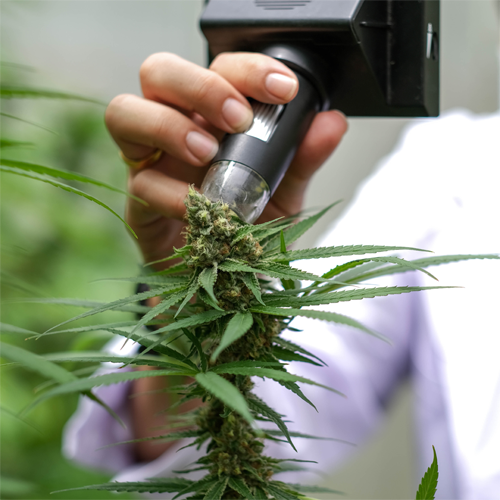Is Hemp Plastic the Way of the Future?
As we become more eco-conscious, we begin looking for new ways to replace plastics that pollute our oceans and pack into landfills. Hemp has been earmarked as a promising alternative to plastics, mostly for its biodegradable capabilities, its quick growth cycle, and availability. But is it a viable alternative in the long run?
New research has begun exploring the capabilities of using industrial hemp to make plastic alternatives from straws to bags to everything in between. This niche of the industry has experienced a lot of attention and growth over the past several years. As more growers look to diversify, the fiber sector (which includes plastics, papers, and other goods) has become an enticing opportunity.

New Research On Hemp Plastics
According to a paper shared by the World Journal of Advanced Research and Reviews, “Chemically, the bark fibres of the hemp stalk contain considerably more cellulose and holocellulose, and significantly less lignin than either hardwoods or softwoods [20- 51]. The different fibre types can be used to make a variety of textile and industrial products such as fabric, paper/ pulp, insulation, composite boards, plastic, paint, sealant, biochar and bioenergy.”
However, creating a true hemp-based plastic alternative is still a work in progress. Current hemp plastics are made using additional materials to create the desired end result. These additional materials can vary, and researchers around the world are searching for ways to make 100% hemp-based plastic a reality.
According to research shared by the Bangladesh University of Textiles, “While 100% hemp-based plastic is still a rarity, composite bioplastics made from hemp and other plant sources are already in use. Though it is by definition a composite, in reference to dimension and end-uses, researchers often use hemp plastics as distinguished terminology.”
Challenges to Hemp-Made Alternatives
While the hemp fiber industry has many paths of opportunity ahead of it, there are hurdles that it will have to overcome. Several factors hinder the expansion and progression of the evolution of hemp-derived plastic alternatives.

Legislative Action
One of the foremost obstacles standing in the way of growth is legislative action. At the time of this writing, the 2024 Farm Bill has not yet been passed into law. The hemp industry has moved more quickly than legislation and regulation can keep up with.
Supply vs Demand
Another, somewhat more demanding hurdle for hemp-derived plastics alternatives, is the supply of hemp fiber on the market vs the demand. According to Kings Research, the US Hemp Fiber Market was valued at $7.55 Billion. They forecast that value to rise to $73.55 Billion by 2030, with a CAGR of 33.75%. Even so, the market has only begun to meet the demand for hemp fiber.
Beyond Hemp Plastics
As mentioned above, hemp fiber can be used to create goods other than plastic alternatives. Over the past several years, a large variety of products have entered the market. Some of these products include;
- Paper products such as paper towels, notebook paper, and even toilet paper
- Hempcrete and hemp-based insulation
- Clothing fabric
While there are hurdles that the plastic alternatives niche of the hemp industry faces, all indicators project upward growth and positive movement. Contemporary research and market projections all show hope for the hemp fiber industry, especially the plastic alternative niches. At the time of this writing, the fiber industry is still working to meet the demands of consumers eager to invest in more eco-friendly and sustainable alternatives. Who knows, hemp-based plastics may be the way of the future, retiring harmful plastics for good.
To stay up-to-date with hemp industry news, check out all of the great content on CBD News Weekly.





